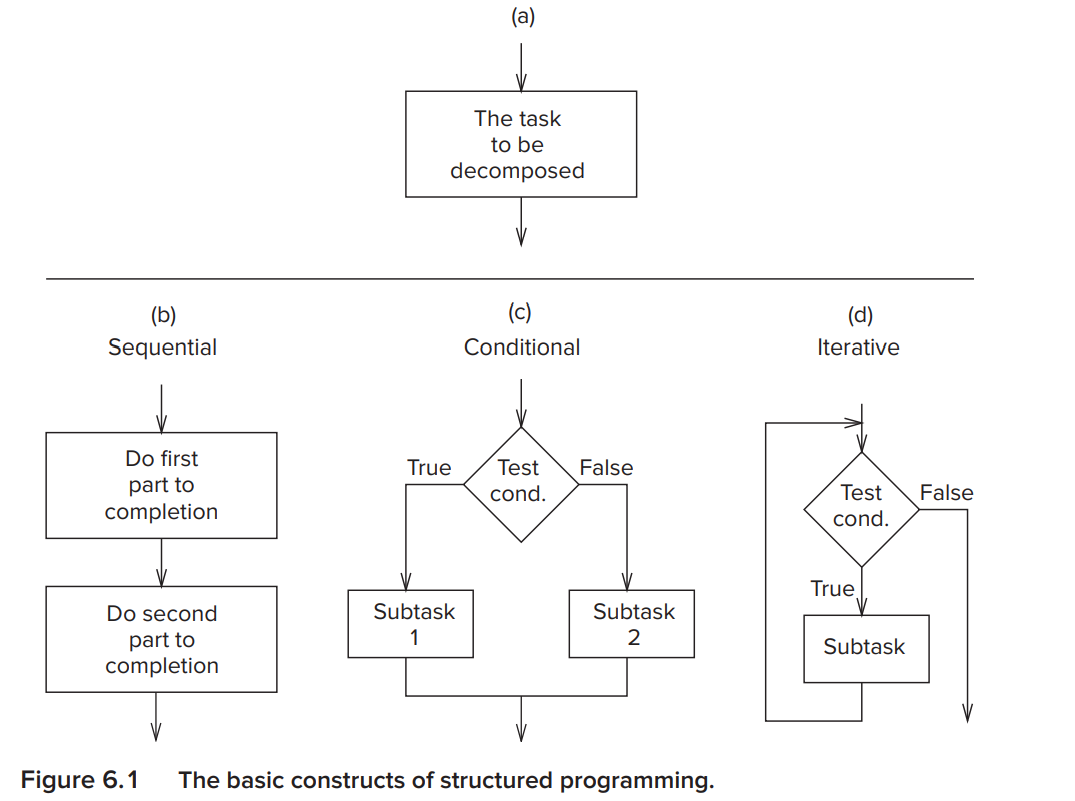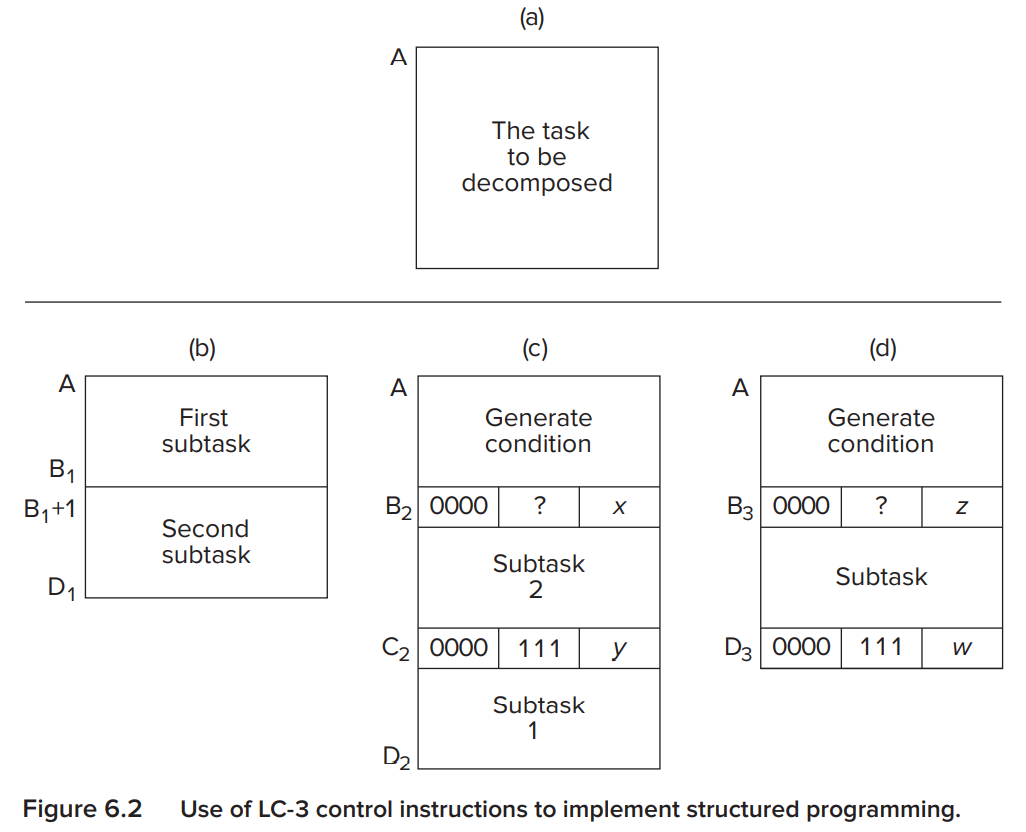Chapter 6 Programming¶
Abstract
Covered in Lecture 6, 2022.7.16
Topics:
1. Structured Programming
2. Debugging
Structured Programming¶
The larger tasks are systematically broken down into smaller ones, which is called systematic decomposition.
There are basically 3 constructs for doing this.
- sequential construct: carry out the first subtask completey, then go to the second. Never go back.
- conditional construct: the task consists of doing one of 2 subtasks but not both, depending on some condition.
- iterative construct: the task consists of doing a subtask a number of times as long as some condition is true.


Debugging¶
The debugging program should be able to
- Write values into memory locations and registers.
- Execute instruction sequences in a program.
- Stop execution when desired.
- Examine what is in memory and registers at any point in the program.
common errors:
- incorrectly setting the loop times.
- confusing LDI and LD.
- forgetting the CC so BR tests the wrong condition.
- corner cases.